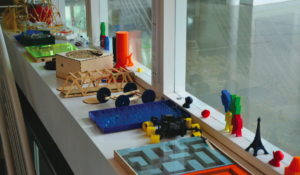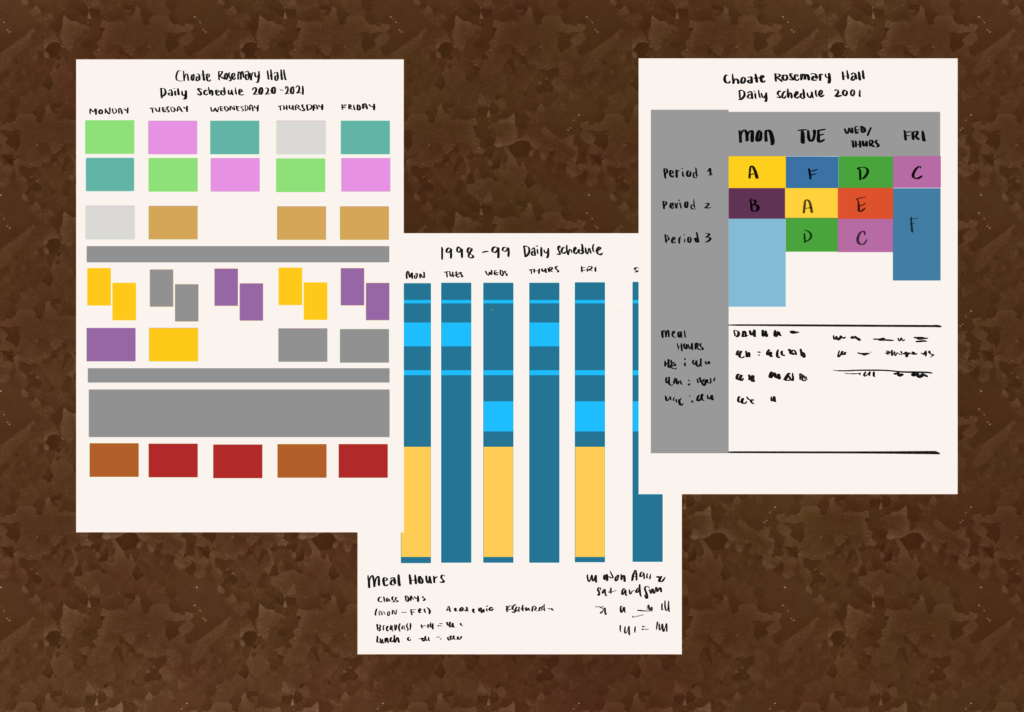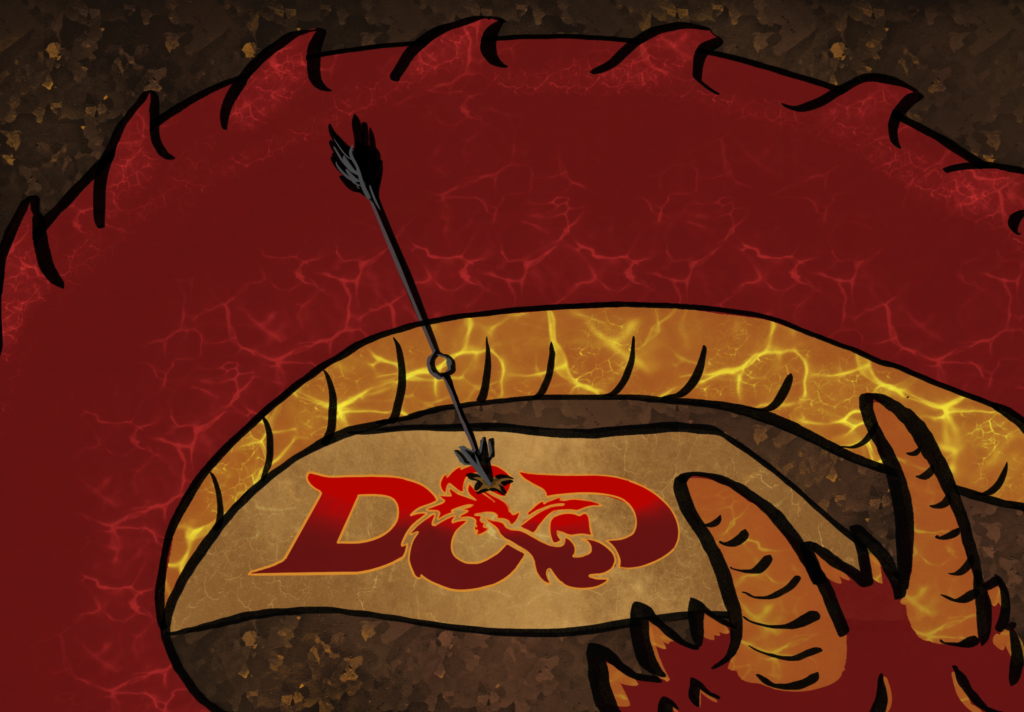The i.d. Lab is full of resources that are open to students and faculty alike. Many students are unaware of the endless possibilities that lie within the two floors that the lab encompasses, with tools and equipment, including wood cutters, 3D printers, sewing machines, circuit boards, book-making materials, and metal cutters. Maybe you have a project for your engineering class, a poster that you want to create for an upcoming march or rally, or you merely want to fix a broken zipper on your backpack — head to the i.d. lab in the Lanphier Center to quench your creative thirst.
Dr. Travis Feldman, the director of the i.d. Lab, makes sure that everything is up and running. He orders the equipment and arranges the supplies. Every morning, Dr. Feldman manages the 3D printers within the lab, which are used by students to create objects for class or personal interest alike.
When Dr. Feldman first arrived at Choate, what is now the school’s i.d. Lab was, as he put it, “essentially an empty classroom, so I was in charge of ordering what we needed — the equipment and supplies that are in the i.d. lab today.” Dr. Feldman is currently in the midst of expanding the lab so that it includes a book-making area where students (and faculty members, if they wish to do so) are able to make their own paper and bind their own books.
Several clubs use the space, such as electronics, and computer programming groups, including Comic Book Club and Games and Change. In past years, The Choate News used the lab for assignment meetings, though those recently moved to St. John Hall. Outside of a meeting and study space, the i.d. Lab is also a creative hub for students. Dr. Feldman said, “Some projects are assigned and others the students just come up with… maybe they just want to do something for a class.”
Case in point: Sabrina Xie ’17 used resources from the i.d. lab to construct a mechanical keyboard. She decided to construct the keyboard because she has a 100 percent keyboard at home — a keyboard with as many keys as a PC, rather than the 60 percent keyboard that is standard on portable laptops. Xie “really enjoys typing on it, but wanted something more portable.” She then decided to build a split keyboard “because I type weirdly where my hands aren’t angled the same way, and it’s really uncomfortable.”
Xie bought a standard PC board online, and, in the i.d. Lab, soldered the electronic components together using a soldering iron and then used screws, four layers of acrylic and a layer of wood to hold the keys and PC board together. She then used the laser cutter for the keyboard case.
Zev Nicolai-Scanio ’18 and Weston Miller ’17 have used the i.d. Lab’s to rebuild the Science Center clock. As a faculty child, Nicolai-Scanio used to always wind the clock whenever he walked through the Science Center. When he recently noticed the clock showing some signs of wear, he talked to Miller, who is in his Physics C class, and together they decided to try to repair it. To rebuild the clock, Nicolai-Scanio and Miller used various i.d. Lab tools and materials. “We are using the 1/8 inch plywood that is in stock in the i.d. Lab for the body and gears of the clock,” Nicolai-Scanio said. “We are also using shafts from the robotics lab, some wire, and some 3D printed plastic components. The design of our replica centers around the use of the laser cutter in the i.d. Lab.”
Nicolai-Scanio believes that the i.d. Lab is a wonderful place to work on projects. “I certainly go there a lot during free periods, even if it is just to do work,” he said. “Often I end up talking with the other people there and trading ideas and suggestions on our respective projects.”
Xie said, “The most important resource in the i.d. Lab is having a place where you know you can find help. I actually had a soldering iron in my room, but probably would’ve broken a lot of things, not known who to ask, and Googled things and failed without the i.D. Lab.”





